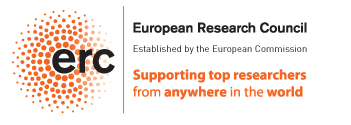About the project
Deformation in Earth’s crust localizes onto faults that may rupture rapidly producing earthquakes or undergo slow aseismic slip. The detailed mechanisms that control the transition between the seismic and aseismic regimes and the onset of earthquakes remain unknown. These mechanisms control the geophysical processes preceding catastrophic failure, such as fracture development and strain localization on faults and in the rock volumes surrounding them.
Our goal is to provide the first quantitative laboratory observations of the full displacement field in rocks before and during fault slip and separate the aseismic and seismic components of it. In the project BREAK we will build several experiments that rely on dynamic synchrotron X-ray imaging and ultrasonic monitoring to unravel hidden earthquake physics processes. The project relies on a collaboration between the Njord Centre at the University of Oslo and the European Synchrotron Radiation Facility (ESRF).

Objectives
In the BREAK project, we will design and conduct a suite of experiments to image the slow and fast processes that occur before and during laboratory earthquakes under in situ conditions and directly inside the samples. The two main challenges are:
- Challenge 1. Develop a new rock deformation apparatus that couples dynamic X-ray imaging and acoustic emission monitoring to study the earthquake preparation process in dry and wet rocks.
- Challenge 2. Unravel the microstructures of dynamic rupture and slip in faults, residual strain, and the effects of water during and between earthquakes.
Outcomes
The results obtained in these experiments and observations of microstructures in natural fault rocks will be used to validate numerical and data driven models of the processes that occur as the accumulation of elastic energy drives faults towards rupture. If we can demonstrate that the joint analysis of acoustic emission signals and X-ray microtomography data can be used to predict dynamic rupture in our experiments, we will have discovered an important lead towards laboratory earthquake prediction.
The overarching goal is to progress toward a general model of the path to brittle failure in rocks by advancing knowledge of how fractures accumulate before and during both slow and fast earthquakes, under dry conditions, and in the presence of water.
Financing
The European Research Council, ERC Advanced Grant #101019628
Cooperation
- The Njord Center, University of Oslo, Norway
- European Synchrotron Radiation Facility (ESRF), Grenoble, France
- University of Southern California, CA, USA
- University of Maryland, MD, USA
- University of Oxford, UK
- ISTerre, University of Grenoble Alpes, France


